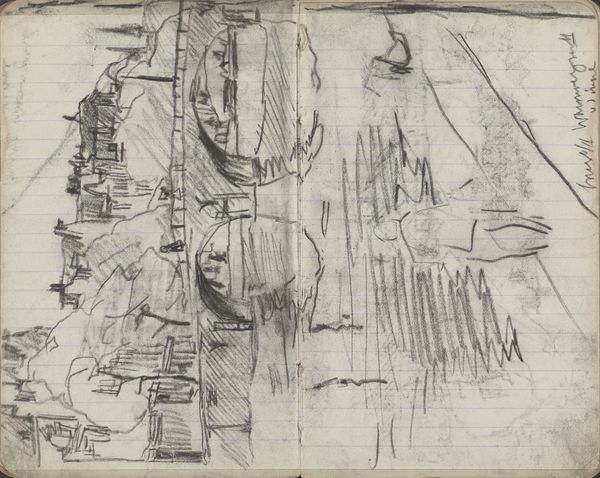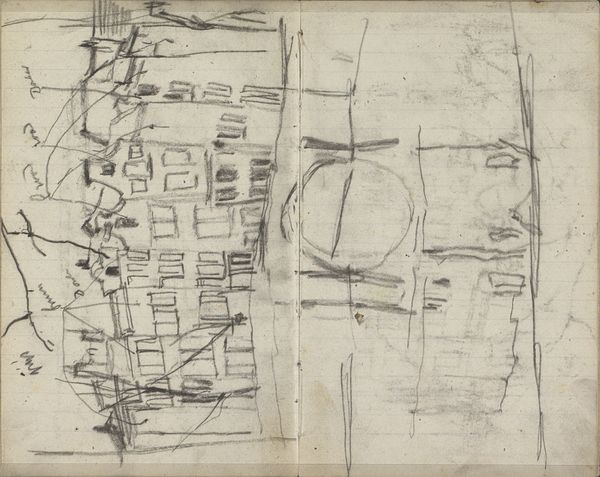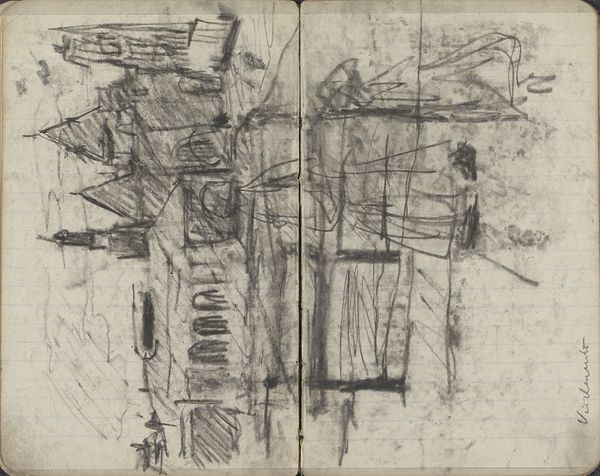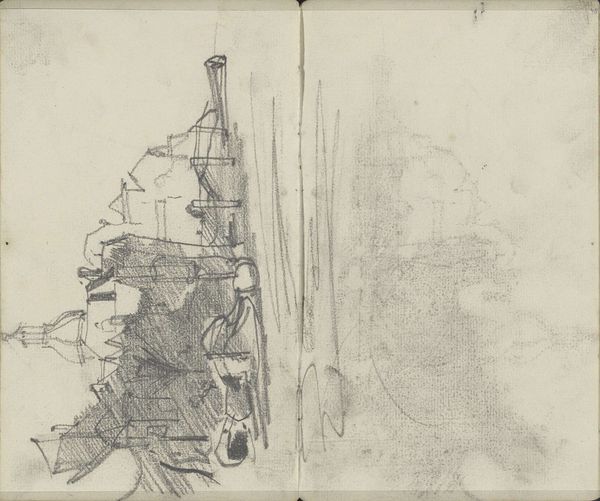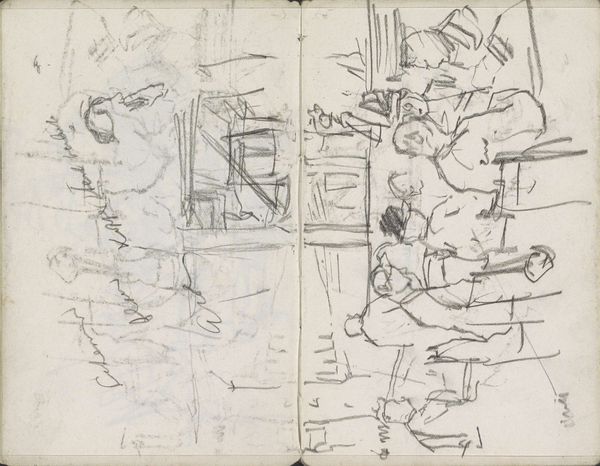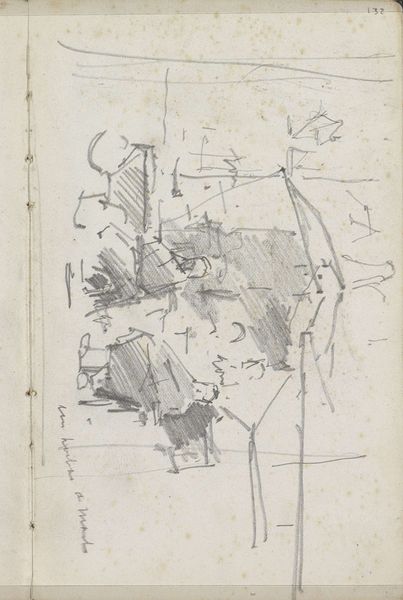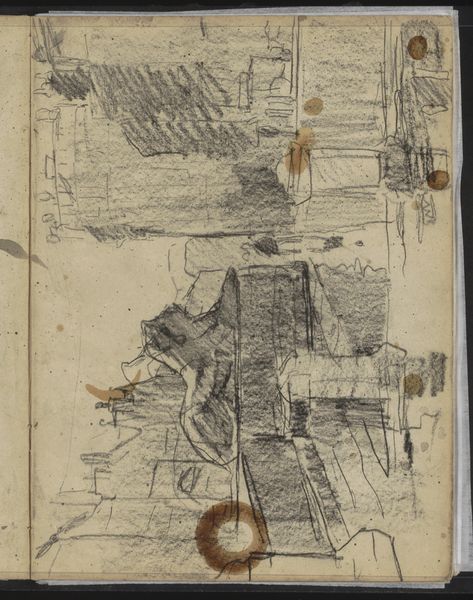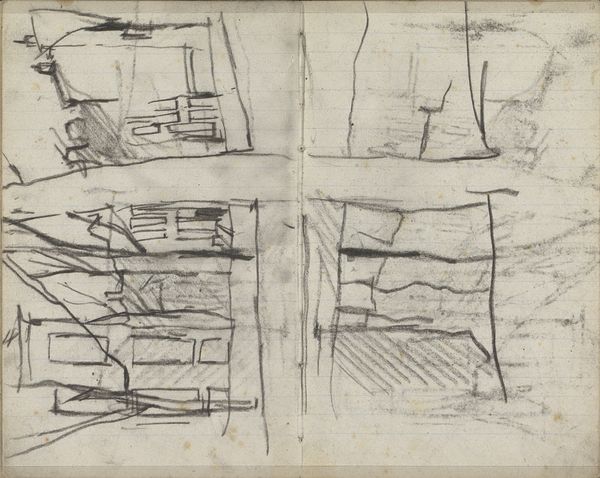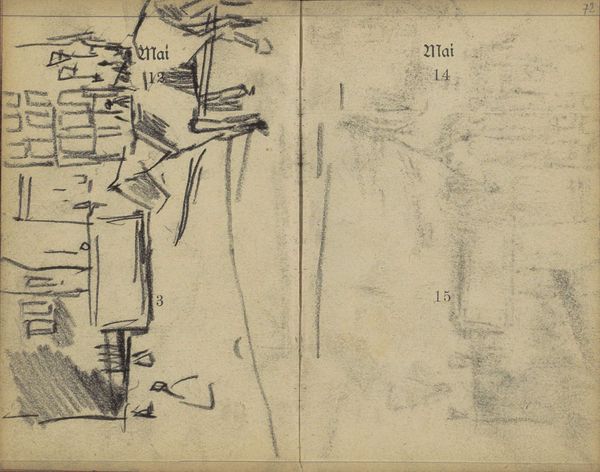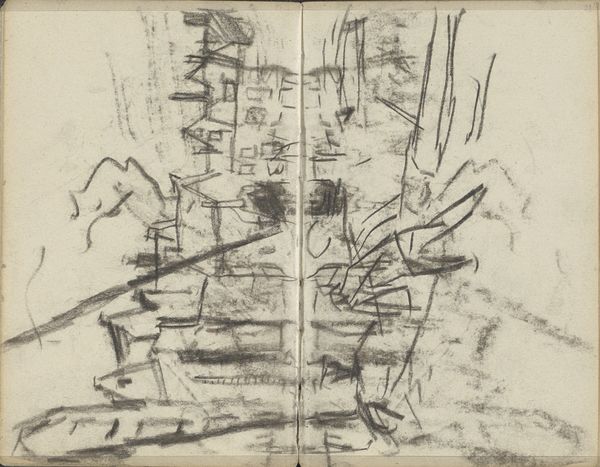
Figuren op een markt en een studieblad met figuren Possibly 1881 - 1883
0:00
0:00
georgehendrikbreitner
Rijksmuseum
drawing, pencil
#
portrait
#
drawing
#
quirky sketch
#
impressionism
#
pen sketch
#
sketch book
#
figuration
#
personal sketchbook
#
idea generation sketch
#
sketchwork
#
pen-ink sketch
#
pencil
#
sketchbook drawing
#
storyboard and sketchbook work
#
sketchbook art
Copyright: Rijks Museum: Open Domain
Curator: On display here we have “Figures in a Market and a Study Sheet with Figures” by George Hendrik Breitner, likely created between 1881 and 1883. It's a drawing rendered in pencil. Editor: It certainly gives the immediate impression of immediacy and of transience, a brief observation captured with minimal strokes. The composition on the left seems almost chaotic, and on the right, the suggestion of faces is equally fragmented. Curator: Breitner was known for documenting urban life in Amsterdam, and this sketchbook page gives us insight into his process. Observe how the forms are built through layers of lines and shading, suggesting movement and the bustling energy of the market scene. Editor: Absolutely. You can see the influence of Impressionism in his capture of fleeting moments. The sketchy lines and unfinished quality give the drawing a sense of spontaneity, very different from the formal portraiture of that time. How would you interpret the decision to include figure studies right alongside it on the same sheet? Curator: The right side presents an anatomical study, perhaps an initial consideration of figure placement within his work. It suggests the rigorous practice underlying what may appear as a purely spontaneous style, almost like he is playing with possible scenarios and expressions. It may reflect the artistic traditions that emphasize observation as a basis for genuine representations. Editor: I see how the relationship is significant to Breitner's overall method, because it highlights his dedication to studying the subtleties of his figures so as to inject life into his work and ensure its relevance within the modern tradition. The way he builds up the images through tonal variations and angular shapes speaks to a commitment to material experimentation and expressive manipulation of line. What could have made this such a useful and significant object at that period in time? Curator: This sort of personal sketchbook held significant utility to artists of the 19th Century; it preserved nascent inspirations which enabled a public discourse of creative progression in exhibition spaces, studios and beyond. Breitner utilized his sketchbooks to produce a record of encounters within Amsterdam's civic environment. Editor: Looking at it now, one is provided with not only a historical document capturing quotidian society, but an artistic revelation underscoring how vital diligent material exploration remains for producing resonant works. Curator: Precisely. Its beauty arises not simply from the rendering on display but from this record highlighting his methodical approach within contemporary Dutch artistry. Editor: A fascinating intersection of form and context, really, unveiling some wonderful facets of its creator.
Comments
No comments
Be the first to comment and join the conversation on the ultimate creative platform.
